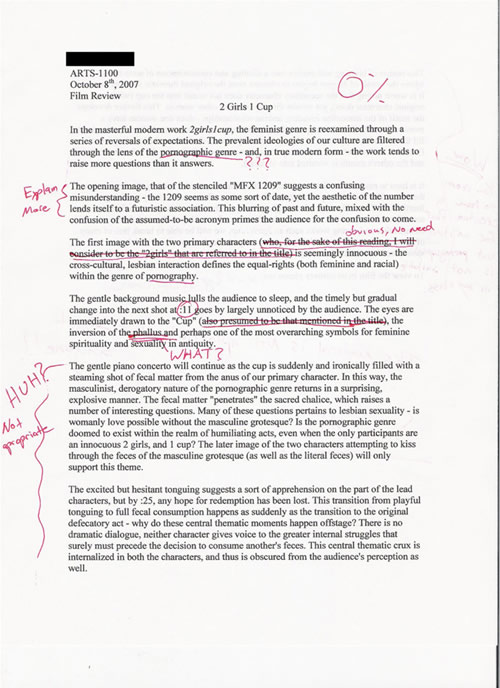Written by Ethan
Major League Baseball?s winter meetings just ended. As general managers return to their homes, the annual flurry of free agent signings and contract extensions is in full swing. These deals aren?t just about the money, though; they?re also about bonus clauses and sweet, sweet perks. Here?s a list of some of the more ludicrous ones players have received.
 1. Charlie Kerfeld, Houston Astros
1. Charlie Kerfeld, Houston Astros
After a spectacular rookie season in 1986, the rotund reliever who always pitched in his lucky Jetsons t-shirt needed a new contract. Kerfeld asked for $110,037.37, matching his number 37 jersey, to pitch in 1987. On top of that, he received 37 boxes of orange Jell-O in the deal. The Astros would soon regret this delicious bonus, though; Kerfeld, who was famously caught eating ribs in the dugout that season, would battle weight and injury problems and get sent down to the minors.
2. Rollie Fingers, Oakland Athletics
 Former A?s owner Charlie Finley never thought of a gimmick he wouldn?t try, including a mechanical rabbit that delivered fresh balls to the umpire and hiring a 13-year-old MC Hammer as his ?Executive V.P.? In 1972, Finley offered his players cash for growing a mustache by Father?s Day, thereby giving birth to reliever Fingers? trademark handlebar ?stache. The A?s went on to win the World Series that season, and Fingers? contract for 1973 contained a $300 bonus for growing the mustache as well as $100 for the purchase of mustache wax.
Former A?s owner Charlie Finley never thought of a gimmick he wouldn?t try, including a mechanical rabbit that delivered fresh balls to the umpire and hiring a 13-year-old MC Hammer as his ?Executive V.P.? In 1972, Finley offered his players cash for growing a mustache by Father?s Day, thereby giving birth to reliever Fingers? trademark handlebar ?stache. The A?s went on to win the World Series that season, and Fingers? contract for 1973 contained a $300 bonus for growing the mustache as well as $100 for the purchase of mustache wax.
3. Roy Oswalt, Houston Astros
 Before Oswalt made a start in the 2005 National League Championship Series, Astros owner Drayton McLane promised to make the ace?s dreams come true if he won, specifically his life goal of bulldozer ownership. After Oswalt dominated the Cardinals to send Houston to its first-ever World Series, McLane came through with a Caterpillar D6N XL. Since Major League Baseball requires high-dollar gifts be disclosed, Oswalt signed an addendum to his contract, a ?bulldozer clause,? authorizing the club to give him his new toy.
Before Oswalt made a start in the 2005 National League Championship Series, Astros owner Drayton McLane promised to make the ace?s dreams come true if he won, specifically his life goal of bulldozer ownership. After Oswalt dominated the Cardinals to send Houston to its first-ever World Series, McLane came through with a Caterpillar D6N XL. Since Major League Baseball requires high-dollar gifts be disclosed, Oswalt signed an addendum to his contract, a ?bulldozer clause,? authorizing the club to give him his new toy.
4. Troy Glaus, Arizona Diamondbacks
 Arizona inked the slugging third baseman signed for four years and $45 million in December 2004. As part of the deal, Glaus receives $250,000 annually for ?personal business expenses,? namely the cost of his wife Ann?s equestrian training and equipment. Although Glaus bashed 37 homers for the Snakes in 2005, he also tied for the major-league lead in errors by a third baseman with 24, and despite Mrs. Glaus? surely improving performance in the steeplechase, Glaus had to hoof it to Toronto when he was traded barely a year after signing.
Arizona inked the slugging third baseman signed for four years and $45 million in December 2004. As part of the deal, Glaus receives $250,000 annually for ?personal business expenses,? namely the cost of his wife Ann?s equestrian training and equipment. Although Glaus bashed 37 homers for the Snakes in 2005, he also tied for the major-league lead in errors by a third baseman with 24, and despite Mrs. Glaus? surely improving performance in the steeplechase, Glaus had to hoof it to Toronto when he was traded barely a year after signing.
 5. Randy Johnson, Arizona Diamondbacks
5. Randy Johnson, Arizona Diamondbacks
When the Big Unit signed with the Arizona Diamondbacks in 1998, team owner Jerry Colangelo also threw in a pair of partial season tickets for the Phoenix Suns to lure in the lanky lefty. Seems like Johnson could have afforded his own tickets, but to be fair, when you?re making $52 million over four years, it?s hard to get scalpers to fall for ?Can you take twenty for the pair? I swear it?s all I?ve got, dude.?
6. Carlos Beltran, New York Mets
 Beltran?s mammoth seven-year, $119 million deal from January 2005 showed that he had all of baseball?s five tools but lacked a conditioned ocular enhancer, a gadget that throws numbered, colored tennis balls over 150 mph to help players pick up the speed of a pitched ball. So he got a contract clause requiring the Mets lease the machine and retain an operator for it. However, Beltran only hit .266 in his first year with the club, so maybe a used copy of Tony Gwynn?s tome The Art of Hitting would have been more cost-effective.
Beltran?s mammoth seven-year, $119 million deal from January 2005 showed that he had all of baseball?s five tools but lacked a conditioned ocular enhancer, a gadget that throws numbered, colored tennis balls over 150 mph to help players pick up the speed of a pitched ball. So he got a contract clause requiring the Mets lease the machine and retain an operator for it. However, Beltran only hit .266 in his first year with the club, so maybe a used copy of Tony Gwynn?s tome The Art of Hitting would have been more cost-effective.
7. Brad Lidge, Houston Astros
 When the Houston Astros (sound familiar?) re-signed Brad Lidge in January 2007, their former closer got an incentive clause promising $25,000 for winning a Silver Slugger, given annually to the top hitter at each position. Lidge probably didn?t consider this easy money; as a relief pitcher, he had only been to the plate seven times in his five-season career and hadn?t seen an at-bat since 2004. Despite an erratic season on the mound, Lidge was the model of consistency at the plate in 2007, mostly because he never had an at-bat. Houston finished 13th in the National League in runs scored, though, so maybe letting Lidge take some hacks would have been worth a try.
When the Houston Astros (sound familiar?) re-signed Brad Lidge in January 2007, their former closer got an incentive clause promising $25,000 for winning a Silver Slugger, given annually to the top hitter at each position. Lidge probably didn?t consider this easy money; as a relief pitcher, he had only been to the plate seven times in his five-season career and hadn?t seen an at-bat since 2004. Despite an erratic season on the mound, Lidge was the model of consistency at the plate in 2007, mostly because he never had an at-bat. Houston finished 13th in the National League in runs scored, though, so maybe letting Lidge take some hacks would have been worth a try.
8. A.J. Burnett, Toronto Blue Jays
 Lots of players have free-plane-ticket perks written into their contracts, but some feel that air travel really lacks that fun we?re-going-to-the-prom feeling that you can only get from a long limo ride. When flamethrower A.J. Burnett signed with Toronto as a free agent in December 2005, he required that his wife receive eight round-trip limo rides from his home in Maryland to Toronto each season. That?s around nine hours in a limo each way, which is enough time to move the little divider between you and the driver up and down roughly 3,500 times.
Lots of players have free-plane-ticket perks written into their contracts, but some feel that air travel really lacks that fun we?re-going-to-the-prom feeling that you can only get from a long limo ride. When flamethrower A.J. Burnett signed with Toronto as a free agent in December 2005, he required that his wife receive eight round-trip limo rides from his home in Maryland to Toronto each season. That?s around nine hours in a limo each way, which is enough time to move the little divider between you and the driver up and down roughly 3,500 times.
Some other interesting perks and bonuses:
 9. Daisuke Matsuzaka, Boston Red Sox ? Dice-K?s deal with the Red Sox includes a plethora of strange or excessive clauses including housing allowances and a personal masseuse, but the oddest is that he?s contractually guaranteed the jersey number 18.
9. Daisuke Matsuzaka, Boston Red Sox ? Dice-K?s deal with the Red Sox includes a plethora of strange or excessive clauses including housing allowances and a personal masseuse, but the oddest is that he?s contractually guaranteed the jersey number 18.
10. Kevin Brown, Los Angeles Dodgers ? The seven-year, $105 million deal Brown signed after the 1998 season guaranteed twelve round trip private jet trips from L.A. to his hometown in Macon, Georgia for his family, sparing his children from cruel flight attendants? taunts about their dad being overpaid.
11. Dave Roberts, San Francisco Giants ? The deal Roberts signed last December gives him the right to buy four premium season tickets each year. He?s probably going to keep passing until management puts a decent team on the field, though.
12. Ichiro Suzuki, Seattle Mariners ? Ichiro?s five-year contract extension from July 2007 contains some reasonable perks (interpreter, plane tickets to Japan), but also stipulates the club give him a Jeep or Mercedes SUV, filling the Japanese auto industry with a deep collective sense of shame.
13. Mark Teixeira, Atlanta Braves – Teixeira?s deal for 2006-2007 (originally negotiated when he was with Texas) had a clause paying him $100K for winning the AL MVP, a tough feat since he finished the contract while playing in the National League.
14. Curt Schilling, Boston Red Sox ? The three-time World Series champ?s new deal with the Red Sox for the 2008 season not only rewards Schilling for maintaining his weight, but also gives him $1M for appearing on any voter?s three-man Cy Young ballot. Take note, enterprising voters (?Sixty-forty split sound fair, Curt??)
Ethan Trex grew up idolizing Vince Coleman, and he kind of still does. Ethan co-writes Straight Cash, Homey, the Internet?s undisputed top source for pictures of people in Ryan Leaf jerseys.


 10. Dattoos: Interactive Tattoos
10. Dattoos: Interactive Tattoos 9. Astrium Spaceplane
9. Astrium Spaceplane 8. Custom Kicks
8. Custom Kicks 7. Nikon 360
7. Nikon 360 6. Honda Cub Motocycle
6. Honda Cub Motocycle 5. Pills To Go
5. Pills To Go 4. WPA Wearable Power Suit
4. WPA Wearable Power Suit 3. B-Membrain Computer
3. B-Membrain Computer 2. Credit Card of the Future
2. Credit Card of the Future 1. Timeflex Stick-On Watch
1. Timeflex Stick-On Watch



















